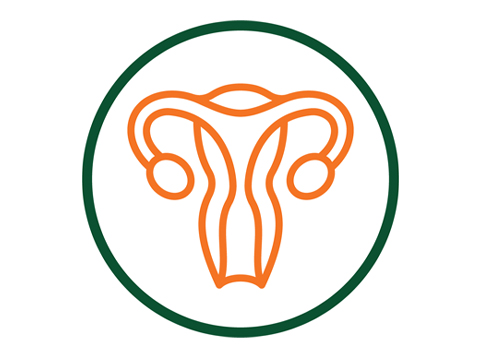Randevou
Rele oswa ranpli kesyonè nou an pou wè si ou satisfè kritè pou yon tès depistaj kansè nan matris.
Rele nou nan
(305) 243-4530
Oswa
Kansè nan matris anjeneral kòmanse lè selil anòmal grandi nan kòl matris la, ki sitiye nan pati anba a nan matris la ak pi wo a vajen an. Jodi a, la papillomavirus imen (HPV) konte pou plis pase 90% nan kansè nan matris ak apeprè 13,960 fanm yo dyagnostike ak kansè nan matris chak ane. Depistaj kòmanse a 21 an epi li kontinye jiska 65 an. Lè tès depistaj yo fè regilyèman epi yo jwenn kansè nan matris bonè, chans pou siviv ogmante anpil.
An 2021, OMS te anonse Sylvester Comprehensive Cancer Center se premye sant kolaborasyon li pou elimine kansè nan matris. Aprann plis.
Ki sentòm kansè nan matris yo?
Anjeneral, moun yo pa gen sentòm ak premye etap kansè nan matris men tès depistaj ka detekte selil iregilye ki ka kansè pandan tès depistaj woutin ak anvan sentòm yo parèt.
Sentòm yo enkli:
Sentòm nan etap bonè
- Senyen nan vajen apre sèks
- Senyen nan vajen apre menopoz
- Senyen nan vajen ant peryòd oswa peryòd ki pi lou oswa pi long pase nòmal
- Sekile nan vajen ki dlo epi ki gen yon odè fò oswa ki gen san
- Doulè basen oswa doulè pandan sèks
Sentòm avanse
- Difikilte oswa douloure mouvman entesten oswa senyen lè w gen yon mouvman entesten
- Pipi difisil oswa douloure oswa san nan pipi
- Anfle nan janm yo
- Doulè ki pa nòmal nan vant
- Li toujou santi fatige
Al wè doktè ou si w gen nenpòt nan sentòm sa yo.
Pwogram depistaj kansè nan matris Sylvester
Nan Sylvester Comprehensive Cancer Center, ki fè pati University of Miami Leonard M. Miller School of Medicine, nou ofri ekspètiz avanse ak tès sofistike pou jwenn kansè nan matris nan premye etap yo. Nou se youn nan de sèlman sant kansè Enstiti Nasyonal Kansè (NCI) deziyen nan eta Florid la ak youn nan jis 72 nan tout peyi a. Li rekonfòtan pou w konnen w ap travay ak yon ekip ki gen anpil eksperyans.
Men kèk rezon ki fè pasyan yo depann de ekspètiz nou yo:
Ekspè kansè ki renome nan lemonnantye. Si yo jwenn kansè, ou travay ak espesyalis kansè nan matris ki bay yon dyagnostik egzat ak tretman ki pi vize yo - ki gen ladan chirijyen trè kalifye ki minim pwogrese. Nou ofri apwòch avanse ou p ap jwenn okenn lòt kote tou pre.
Kapasite dyagnostik avanse. Nou itilize ekipman imaj sofistike pou jwenn kansè nan premye etap yo. Nou kapab fè distenksyon ant rezilta nòmal ak nòmal ki souvan mal dyagnostike.
Chirijyen andoskopik ki gen eksperyans. Chirijyen nou yo gen eksperyans avanse nan pwosedi andoskopik ki fèt nan rèktòm, bay yon apwòch mwens pwogrese nan operasyon tradisyonèl yo. Apwòch sa yo ofri mwens doulè ak sikatris, yon sejou lopital ki pi kout, ak yon gerizon pi rapid.
